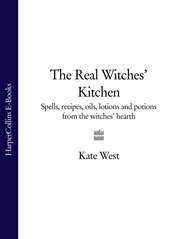
Полная версия:
The Real Witches’ Kitchen: Spells, recipes, oils, lotions and potions from the Witches’ Hearth

THE
REAL WITCHES’
KITCHEN
SPELLS, RECIPES, OILS, LOTIONS AND
POTIONS FROM THE WITCHES’ HEARTH
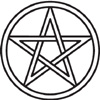
KATE WEST

Copyright
Element
An imprint of HarperCollinsPublishers 1 London Bridge Street London SE1 9GF
www.harpercollins.co.uk
Element is a trademark of HarperCollinsPublishers Limited
First published by Thorsons, an imprint of HarperCollinsPublishers 2002
This edition published by Element 2002
© Kate West 2002
Kate West asserts the moral right to be identified as the author of this work
A catalogue record for this book is available from the British Library
All rights reserved under International and PanAmerican Copyright Conventions. By payment of the required fees, you have been granted the nonexclusive, nontransferable right to access and read the text of this e-book on-screen. No part of this text may be reproduced, transmitted, downloaded, decompiled, reverse engineered, or stored in or introduced into any information storage and retrieval system, in any form or by any means, whether electronic or mechanical, now known or hereinafter invented, without the express written permission of HarperCollins e-books.
HarperCollinsPublishers has made every reasonable effort to ensure that any picture content and written content in this ebook has been included or removed in accordance with the contractual and technological constraints in operation at the time of publication.
Source ISBN: 9780007117864
Ebook Edition © FEBRUARY 2016 ISBN: 9780007387588
Version: 2016-01-06
Contents
Cover
Title Page
Copyright
Introduction
ONE: Witchcraft, and Empowering your Herbal Work
TWO: Guidelines for Buying, Using and Storing Herbs and Plants
THREE: Soaps and Bathing Preparations
FOUR: Oils, Lotions and Potions
FIVE: Candles and Incenses
SIX: Feasting around the Wheel of the Year
SEVEN: Breads, Cakes and Biscuits to Honour the Goddess and the God
EIGHT: Soups and Foods to Strengthen and Heal
NINE: Brews and Teas
TEN: Looking Good, Feeling Fine
ELEVEN: Herb Sachets and Gifts
Keep Reading
Terms and Definitions
Further Information
Index
Acknowledgements
Also by the Author
About the Publisher
Introduction Merry Meet!
And welcome to The Real Witches’ Kitchen. The image of a Witch as a ragged-haired woman, dressed all in black, throwing strange ingredients into a bubbling cauldron in the dead of night is somewhat outdated! These days she, or he, is far more likely to be someone you know, dressed in normal clothes, working in their own kitchen. Witchcraft (or the Craft) is a very practical path, so who is going to forego the convenience of a modern cooker, the cleanliness of a decent work surface or the comfort of their own home for the environment that our predecessors were obliged to make do with? A herbal remedy, candle or incense is not going to be any less effective because you created it in the kitchen at lunchtime rather than in the woods at night. Witches of old may have needed to work furtively without modern power and water supplies, but that was because of the times they lived in, not because it makes for better Magic.
This book, however, is not just about Witchcraft or just for Witches. More and more people today are looking for natural remedies to enhance their physical, emotional and spiritual well-being. They are seeking ways of enhancing their health, bodies and lives in ways which do not involve chemicals but rather make use of the herbs and plants which are all around us.
The Real Witches’ Kitchen is a book for everyone who wants to start making use of nature’s healing store. Here we look at the ways that common herbs and spices, and even some unlikely-sounding plants, can not only enliven our diet but also be used to heal the body, soothe the mind and enliven the spirit. Whilst this is not a cookery book, there are recipes and menus which can be used to celebrate the seasons, help our bodies to combat common ailments and even enhance romantic moments. There are teas, brews and even alcoholic beverages for celebration and for healing. There are soaps, oils, lotions and potions to smooth the way in daily life, as well as dietary advice and guidance, grooming and cosmetic tips to help you make the most of what nature has given you and candles and incenses to create a mood or focus you in the direction you need. There are even ideas for gifts for those who are dear to you.
Those who practise the Craft will find new ideas for celebrating the Wheel of the Year and ways of honouring the Goddess and the God. There are ways of feeding the elements within and working towards balance. Here you will find soaps and bathing preparations to ready yourself for the Circle, anointing oils for yourself and for Magical work, candles to carry your intent and incenses to please the Gods. There are sachets and charms, wards of protection and ways of enhancing your fortunes.
Those of you who are reading this without any previous knowledge of the Craft or who find the term ‘Witchcraft’ disturbing will find a very basic introduction to this largely misunderstood belief system in Chapter One, ‘Witchcraft, and Empowering your Herbal Work’. This chapter will also provide guidance on using Magic to enhance the effectiveness of your work if you are new to the Craft. If you would like a more in-depth understanding, then I recommend that you also read The Real Witches’ Handbook, together with some of the other books mentioned in the Further Information section at the end of this book.
Whatever your beliefs or spiritual path, here you will find ways of working with nature and walking more lightly on our world to make a positive difference to your physical, emotional and spiritual life.
Blessed Be
Kate
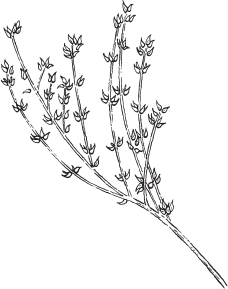
Witchcraft, and Empowering your Herbal Work
‘Let the Magic come to life…’
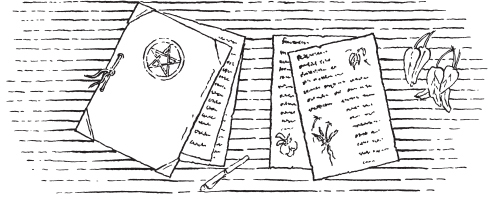
You do not have to be a practising Witch to make use of the recipes and skills which are covered here, but it will help if you have an understanding of the principles of the Craft. For some this will mean putting aside the misconceptions created by the media (especially the popular press) and the adverse comments made by those who have no understanding and no desire to understand our heritage.
Witchcraft is one of a number of belief systems whose roots pre-date Christianity and which come under the ‘umbrella’ heading of Pagan. Indeed, Witchcraft has roots which go back to Palaeolithic times, as illustrated by the cave paintings of our ancient ancestors. Having said that, the Craft is a living religion and has as much relevance to us today as it had to its practitioners in the past. We still seek healing of our bodies and minds, strength to deal with our daily lives, understanding and compassion to help us relate to those around us and to develop our own selves.
So what do Witches believe in and how do they express these beliefs? First, you have to understand that, unlike the more ‘orthodox’ religions, the Craft has no paid or formal priesthood; we are each our own Priest or Priestess and therefore make our own decisions as to the expression of our beliefs. As a result there is no ‘one true way’ to being a Witch. This gives rise to a great diversity in our daily practices and indeed enables the Craft to grow and adapt to the real world in a way that other paths find difficult because of their interpreted doctrine. Having said that, there are many beliefs and practices that most Witches hold in common:
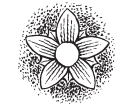

We believe this is equal and in balance, and that we should seek that balance in ourselves and in our lives. Put simply, this means that we believe in the Goddess and the God, and they may be referred to by many names according to the needs of the individual or indeed their personal preference. It helps to think of the Divine as being like a mirror ball, with each facet having a different identity, although all are part of the Divine. As a result you may find that the Goddess is referred to as Isis, Astarte or Hecate, for example, and the God referred to as Osiris, Herne or Pan, and so on. Some Witches will simply refer to the Lord and Lady or the Goddess and the God, and these are the terms that I will use in this book. Others will call them the Old Ones or the Old Gods, or even just the Gods.
The Goddess is seen as having three aspects: Maiden, Mother and Crone (or Wise One). These aspects are reflected in the cycle of the Moon, and in our daily lives, for everything has its beginning, middle and closing phases.
The God also has different aspects, but these are more clearly defined through the festivals of the seasons and the Wheel of the Year.

As mentioned above we have no formal priesthood in the Craft although those Witches working in a group or Coven setting will have a High Priestess and High Priest who are the leaders of that group. This does not make them better Witches, it simply denotes their standing and authority within that group. Having no formal priesthood means we do not rely on others to interpret or intercede with our Gods for us, we are each entitled to make our own connection with the Divine in our own way. This might be through ritual, meditation and/or Magic and most Witches will use a combination of different techniques at different times.

We do not have a book in the way that Christians have the Bible or Muslims the Koran. There are a great number of books on the Craft, however, and it is up to those who wish to read some of these to make personal decisions as to their relevance. Each individual can choose the complexity of their rituals, and the form that their path will take. For some this may mean working in a group or Coven, others may prefer a Solitary path. Some will seek to work formalized Magic whilst others prefer the Hedgewitch approach, working closely with nature and using herbs to achieve their Magic.

Witchcraft is a non-proselytizing belief system – we do not feel the need for everyone to believe as we do in order to feel secure in our faith. There is plenty of room in this world for everyone to find their own way of relating to the Divine. In fact all religions have as much, if not more, in common than in difference. Hence there is no reason why we should not encourage and celebrate a diversity of beliefs. We encourage our young to examine many paths and to make their own decisions, based on their own needs. We do not seek to convert others to our beliefs, nor do we wish to be indoctrinated in turn.

This means not taking more than we need and, indeed, trying to make recompense for that which we have taken. It involves trying to live not only in the modern world but also in balance with the planet. Witches tend to shop second-hand, make at least some of the things they use and to recycle where they can. This does not mean that we are all ‘green warriors’ campaigning against the building of roads or houses. It does mean that we try to tread lightly on the world.

It is not just that we respect nature, we also see ourselves reflected by the elements of Air, Fire, Water, Earth and Spirit. Whilst these elements are all around us in nature they are also within us: Air is our thoughts, Fire our passions and enthusiasm, Water our emotions, Earth our bodies and Spirit our inner selves. These are the energies we harness in working Magic and in order for this to be effective we must be able to achieve balance between them. These elements also have their reflections in daily life. For every project to work it must have its phases of thought, enthusiasm, emotional involvement and formation, and must also be imbued with its own spirit.

Magic has been defined as the ability to create change by force of will and in some respects is not dissimilar to a belief in the power of prayer. However, in Magic it is our personal intervention which creates the change around us. Magic is not like cookery, just a matter of following a recipe and getting a result. True Magic requires a deep understanding of ourselves and the energies that are around us, and the ability to control and focus our own energies. One of the greatest keys to this is the ability to visualize. It also requires a study and understanding of the elements of Earth, Air, Fire and Water, not just in the world, but also within ourselves.
The Magic we practise is not that of stage conjuring or of the special effects that you see so often in modern films. It is practised to heal, protect and enhance our lives. It is worked for ourselves, our near and dear, and for those who come to us with requests for help. Magic should always be practised with the Wiccan Rede (‘An’ it harm none, do what thou will’) in mind and also with regard to the Law of Threefold Return which states that whatever you do, good or ill, will be returned to you three times over. This latter is not confined to Magical working, but should be borne in mind at all times. If you are careful to harm no one and not to interfere with anyone’s freedom of will, then you have the basic guidelines for good Magical practice.

The Witches’ calendar contains eight key festivals, called Sabbats. At these we mark the changes of the seasons and the stories of the Goddess and the God. Whenever possible Witches will gather together to celebrate these festivals by dancing, singing and honouring the Goddess and the God by re-enacting their stories, but Solitary Witches also mark the Sabbats. At the end of these rituals we celebrate by feasting with food and wine. Many of the Sabbats have a familiar feel to non-Witches as they have been taken over by newer belief systems and incorporated into their calendars. Briefly the Sabbats are:
Samhain, 31 October. The most important festival, marking the beginning and end of the year, the beginning of the resting season of the land and a time of remembrance of those who have gone before. A feast of the Goddess as Crone and Wise One.
Yule, 21 December. The Winter Solstice when the decreasing days give way to increasing light and life and we celebrate the rebirth of the Sun.
Imbolg, 2 February. The time when the first signs of life are seen returning to the land and the Goddess changes her robes of Crone for those of Maiden.
Oestara, 21 March. The Spring Equinox, when day and night are equal. The festival of the Goddess Eostar, who is derived from the Goddess Astarte, and whose symbols are the egg and the hare.
Beltane, 1 May. The second most important festival of the year, when the Goddess changes her robes of Maiden for those of Mother and we celebrate the marriage of the Goddess and the God.
Litha, 21 June. The Summer Solstice. Here the Sun is at the peak of its power; from this time onwards the days gradually grow shorter again.
Lammas, 1 August. The festival of the first of the harvest. The feast of Lugh and of the Sacrificial King, who is these days most often represented by a gingerbread man.
Madron, 21 September. The Autumn Equinox, once more a time of balance when day and night are equal. The feast of the height of the harvest.
On the return to Samhain the year has turned full circle, hence the term ‘Wheel of the Year’. In this book you will find recipes for wines, breads, cakes, biscuits (cookies) and other feasting food to celebrate each of these festivals. You do not have to reserve these celebratory aspects of the Craft to share with others on the Path, you can share them with friends and family as a seasonal celebration, so long as you remember not to use this as an opportunity to preach in any way!
People living in the Southern Hemisphere will find their seasons are reversed and may prefer to celebrate the Sabbats as appropriate to the season rather than the calendar date.


The main ‘rule’ in the Craft is called the Wiccan Rede: ‘An it harm none, do what thou will.’ This in itself includes not only respect for others and the world around us, but also respect for ourselves. We believe that we cannot blame others for our thoughts, words and deeds, and that if we do wrong it is up to us to do our best to rectify it.

There is much to learn in the world and in the Craft, but we do not expect others to feed us this information, we seek to expand our knowledge and extend our skills by personal effort. All Witches are aware that they will never know enough, let alone everything. This personal development also includes expanding our personal skills and attributes, ‘ironing out’ our personal misconceptions and problems, and working to become the best self we can. Witchcraft has been called ‘a thinking person’s belief system’, and rightly so in my opinion, as it involves a course of personal exploration and general study which never ceases.


Witches believe that we live many lives and between them we return to the Summerlands, a resting-place where we review the lessons we have learned in the life we have just completed and select the lessons to be learned in the life to come. When we speak of reincarnation we do not mean that we come back as the same person but rather that our spirit is born again. Whilst it can be interesting to research previous incarnations, and the information we acquire may illuminate aspects of our current lives, it is necessary to remember that the personal responsibility we also believe in means that we cannot blame our past(s) for our current problems. We must live in the present and work towards achievement in this life.

We utilize the properties of plants and nature for healing and self-improvement and in the course of our Magic. Herbs, plants and spices can be used in food and drink, lotions and ointments, sachets and talismans (Magical tokens), incense and candles. They can be used in their natural state (as I write this I have rosemary on my desk to aid my thoughts and concentration), fresh, dried or in the form of oil, as in aromatherapy, which has become so popular in recent years. The bulk of this book will be taken up with recipes and suggestions for the use of natural resources to enhance life.

Witches do not have special buildings in which they worship, in fact most Witches do not even have a room or even a space set aside for working. They create their own working space wherever and whenever they need it, and this can be inside or out. This space is called the Circle and it is created in several steps. Briefly speaking, they are:
The invocation of the elements of Air, Fire, Water and Earth, which are the energies on which we draw. They are always called in this order as Air represents thought, which should precede all our actions. We bring the element of Spirit to the Circle ourselves and through the Divine.
The invitation of the Goddess and the God, the Divine, whose assistance we need to perform our working and in whose honour we gather.
The drawing of a Circle large enough to contain those taking part and the actions they are there to perform. This is usually done on the psychic level rather than on the physical, although some will place markers to show the boundary. The Circle is drawn clockwise (or Deosil) from the north-east point of the area, between Earth and Air, and overlaps at that point in order to ensure that it is complete. The Circle is there to contain the energy raised until it is ready to be released and to protect those within its boundaries from outside energies and distractions.



